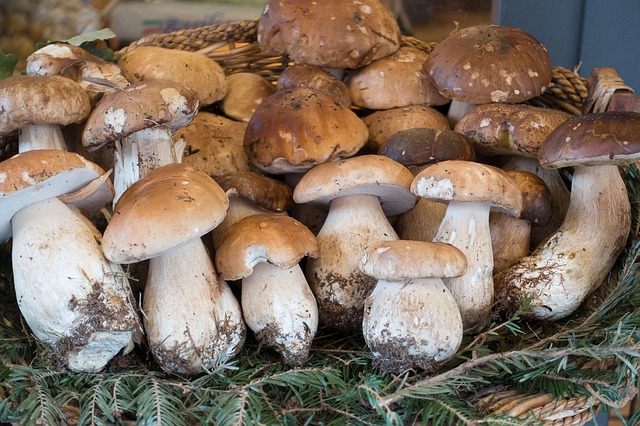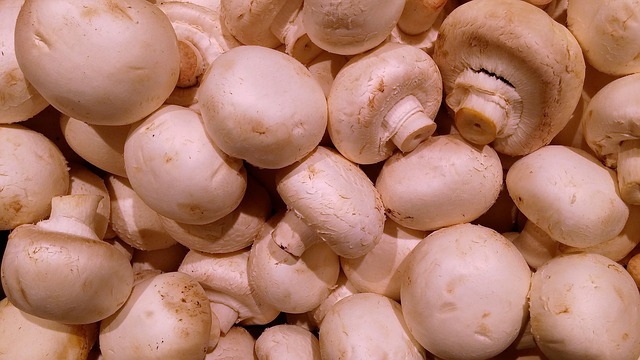The mushroom fungus parasitic plant that is looks like fungus or toad-stool. Although the mushrooms and fungus are looking similar there are huge differences between them. Many people think mushroom means toxic. But all mushrooms are not toxic. There are about 45 thousand types of fungus in the world. Of these, two thousand fungal foods are eligible. Of these, three types of mushrooms in India are cultivated in different climate areas. Mushroom cultivation cannot improve naturally under sunlight. So many places in India are now cultivating mushrooms in modern farming methods. Mushrooms cultivated in scientific methods are very nutritious and medicated vegetables. India’s weather and climate are very useful for mushroom cultivation.
#Health Benefits of Mushroom:
- Mushroom is very nutritious, delicious and medicinal food. It includes proteins, vitamins, minerals, amino acids, antibiotics and antioxidants. It has already become quite popular all over the country due to taste, nutrition and medicine. Here are some benefits of Mushroom:
- Digestibility of mushroom protein is 70-80%, it helps digestion system. For protein, there is plenty of calcium; it is particularly useful for bone and dental formation.
- Due to the Folic acid, anemia is beneficial for disease.
- It works very fast on arthritis, waist, knitting pain, and any person. And also used for jaundice and blood closure.
- Mushroom reduces high blood pressure and prevents the growth of cancer cells.
- Physical and emotional power is increased from regular intake of mushrooms. Blood performance increases and the cough problem are removed.
- Mushroom controls diabetes, reduces fat and remove constipation.

#Types of Mushroom in India:
There are about 3 million species of mushrooms growing in the natural environment in the world. Of these, about 2, 90,000 species are ineligible to eat. Research on approximately 10 thousand species is going on. Only 8-10 species of mushrooms are commercially cultivated in India. The species of mushroom farming in India are:
- Oyster mushroom
- Wood ear mushroom
- Button mushroom
- Milky mushroom
- Shiitake mushroom
- Paddy straw mushroom
In India, we can see five types of mushroom cultivation for food; they are-
1. Paddy straw mushroom:
Using the materials of paddy straw, Bombax the Paddy straw mushroom farming is done. In India, this variety mushrooms are cultivated from March to September month. We can easily do this mushroom cultivation in India with little facilities.
2. Wood ear mushroom:
Generally, during the rainy season, the wood ear mushroom is found in mango trees. Wood ear mushrooms look a lot in color. Although this mushroom is cultivated the whole year, its yield is well in the rainy season.
3. Oyster mushroom:
In India, this variety mushroom is most cultivated. This mushroom can be cultivated all year round, but it is good yield during the winter and rainy season. Oyster mushroom farming in India can be easily cultivated in a very small place.
4. Button mushroom:
Currently, button mushroom cultivation has started in India. If there is appropriate training, the general mushroom entrepreneurs and mushroom farmers of India can produce lots of mushrooms in every winter, in February month. Recently, in India various states are producing commercially button mushroom.
5. Shiitake mushroom:
This mushroom is very healthy and the cultivating process is very easy. Shiitake mushroom farming in India improving day by day. Many young people and housewife are showing their interest in this farming. This mushroom farming business develops lifestyle of many people who are living in India. The climate of India is very suitable for cultivating this mushroom.

#Essential Ingredients for Mushroom Cultivation:
For mushroom cultivation you need the below ingredients:
- Seeds packets
- Thin polythene bags
- Hanging black polythene bags
- Bucket
- Small knives
- Bactericidal
- Hand sprayer
- Hygrometer
- Bamboo
- Paddy straw
- Cocoa seed hulls
- corncobs
#Suitable Place for Mushroom Cultivation:
Mushrooms cannot do this cultivation in open places. As a result, the farmers don’t need arable land for mushroom farming. To cultivate mushrooms, it is possible to build a house with a hay or bamboo shed in the shade. The house must make with a soil wall or bamboo fence. So that the sunlight cannot be entered in the house as the bamboo fleet covered with clay plaques. In the winter, it cultivated of wet damp in the darkroom.
#Mushroom Cultivation Process:
Different types of mushrooms cultivated using the perfect weather and climate of India. To know how to start mushroom farming in India, you must read this cultivation process without skipping, as it is very important for mushroom farming. For mushroom farming in India, you don’t need costly farming tools. Proper training in the farming process and hard work can bring fortune to the mushroom farming business. Know the mushroom cultivation process with step by step guidelines:
1. Seeds Collection:
To produce mushroom you need to collect seeds at the beginning. Initially, for mushroom farming you need to collect the seeds from the government mushroom institute or privately developed mushroom firm. But it is better to build your own seed itself. For this you need proper mushroom farming training from the Mushroom Development Institutes in India.
2. Compost processing:
Take a large drum and put it on the stove with water and heat this. When the water temperature increased up to 600 degrees F then drowned shiny cutting straw of golden color in the water and cover with a lid. To measure the temperature of the water, use the thermometer. Then use the net bag to clean some bricks or stone pieces well for draining in hot water. After an hour of sacking in straw water, the net bag handed over to the water and Hanging straws have to be able to check the amount of water from the net bag. After a certain time, excess water is carried out. If you use cold water in mushroom cultivation, it is less likely to get the disease.
3. Spawn process:
Some polythene bags will have to spread some straw first inside the polythene bags. Mushroom seed powder on the hay will be powders. In this way, a polythene bags should spread the powder of straw and mushroom seeds at four levels. The last level will be spreading straw again. In this way, when the straw is finished, each polythene bags should be tied. Need to make 10-12 holes around each polythene bags. Then keep polythene bags 15-18 days in order to become seeds and sprinkle water 4-5 times a day.
4. Taking care:
From sowing to germination you must taking care of the temperature and it should be 35°C to 45°C. Cover well with polythene to increase heat and reduce heat by opening. Therefore, heat must be controlled according to the conditions. Protect mushroom from insects and spiders and keep wet all the time. When the surface of it is dry then it is necessary to control the humidity by sprinkling water lightly from time to time.
5. Harvesting:
After 5-7 days of the packet is completely white, it should be cut off properly. Hanging the packets on the house wall and provide water with hand sprayer 3 or 4 times in a day for keeping high moisture in the house. If you can keep high moisture, necessary light, CO2 passing process in the house then you can see the shoot of mushroom within 2 or 4 days and after 4 days of that day you can harvest mushrooms easily. Once the collection of mushrooms, you need to clear that place and spray with water and for that it will come again. Thus you can harvest mushrooms from the same packet for seven times. You can collect at least one kg mushrooms from the one straw.
6. Collection and Preservation:
It is necessary to collect mushrooms in time if not then the mushroom to bloom like an umbrella and lose its flavor. The best way is to eat fresh mushrooms. Mushrooms usually stay fresh in polythene bags for 10-15 hours. It can be stored effortlessly in the refrigerator for up to a few weeks. Mushrooms stored for a long time by drying in the sun.
#Mushroom Farming Training In India:
It is as clear that mushroom cultivation is currently the most profitable in agriculture and a large number of people engaged in the mushroom farming business. Mushrooms are food that has a balanced nutritional value and is acceptable to the public at a very low cost. Mushrooms are now a special and reliable crop in every state of India, and the cultivation of this crop usually requires cool weather, for that mushroom cultivation has gained a special reputation in Himachal Pradesh and Uttarakhand.
Researchers have organized a high-quality mushroom farming training camp to encourage farmers to cultivate more high-quality mushrooms, with a five-day training camp for farmers. For those who are interested in taking this training and learn about how to start mushroom farming in India, they must spend Rs. 5,000 per head for the training. This training program is very responsive among ordinary people. With this training, ordinary people are easily and neatly do especially the button mushroom farming in India. Through training, there is also cooperating with mushroom production as well as marketing.

#Advantages of Mushroom Farming Business:
1. Low Capital:
You can start mushroom cultivation in low cost of capital. For the beginning you need 5k to 50k. You don’t need to buy costly farming machines or use cultivated lands. At your own home you can do this farming business.
2. No risk:
The equipment that is currently in use for mushroom cultivation has no risk. Production of spawn in the Pasteurization system is less at risk because there is no Contamination. It is also free from natural disaster as it cultivated in the house.
3. Self Seed production:
A person with proper training can easily produce spawn packets. If you produce seeds yourself, then the cost of mushroom production will reduce.
4. Fast yield in less time:
Production of spawn packets in the Pasteurization system takes 10-15 days to fulfill by Mycelium. Besides, it is possible to raise the investment in a short time due to yields in 3-7 days of spawn packet cutting.
5. Market Chance:
In India, there are huge demand of mushrooms in various hotels, super shops and Chinese restaurants of the big cities. There is a possibility of selling local raw markets, fry shop, grocery stores, neck bend, bus stand etc. It is possible to export mushrooms too far and wide, even possible to export abroad.
Anyone can start this mushroom farming business with proper training and can earn extra money staying in the house. Many people have changed their fate by cultivating mushrooms.
Conclusion:
Mushrooms are gaining popularity all over the world as food. People in the developed world compare mushrooms with meat as it contains the non-vegetarian ingredients and not unique with other vegetables and fruits. Moreover, for disease-free health, we need to keep mushrooms on our food list regularly.
